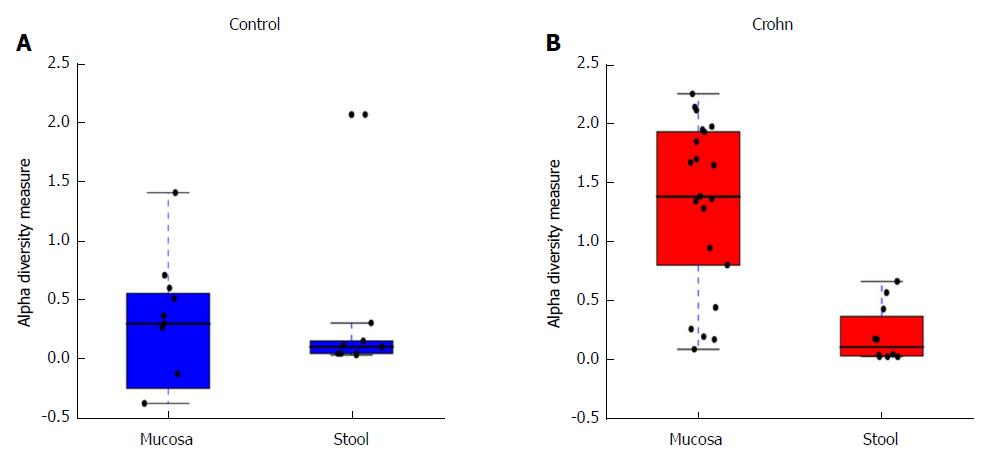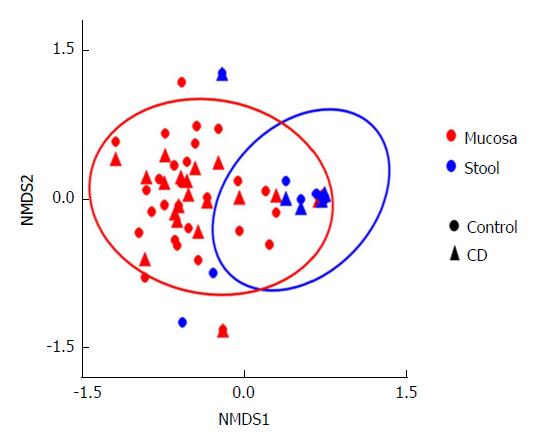Copyright
©The Author(s) 2018.
World J Gastroenterol. Oct 21, 2018; 24(39): 4510-4516
Published online Oct 21, 2018. doi: 10.3748/wjg.v24.i39.4510
Published online Oct 21, 2018. doi: 10.3748/wjg.v24.i39.4510
Figure 1 Dysbiosis score classification curve to distinguish between children with Crohn’s disease and controls.
The receiver operating characteristic (ROC) curve demonstrated the logistic regression dysbiosis classifier. The mean ROC curve for stool (solid black line) and mucosal (solid red line) dysbiosis scores in fungi cohorts is shown. The standard deviation from 100 permutations is shown in gray and light red shading. The area under the curve for stool dysbiosis is significantly higher than in mucosal dysbiosis, using a Fisher’s t-test computed P < 0.001.
Figure 2 Alpha diversity evaluated by the Shannon Index.
Comparison between mucosa and stool in children with Crohn’s disease (CD) and controls. Alpha diversity is significantly lower in stool than in mucosa in CD samples (P = 0.0001), while the difference is not significant in control samples (P = 0.35).
Figure 3 Beta diversity evaluated by Bray-Curtis distance and illustrated by the NMDS plot.
This is a measure of beta diversity, and quantifies the similarity in abundance of taxa between samples. The ovals contain 95% of the probabilities for mucosa and stool. This plot shows a clear separation of mucosa and stool samples (P = 0.005). NMDS: Nonparametric multidimensional scaling; CD: Crohn’s disease.
- Citation: El Mouzan MI, Korolev KS, Al Mofarreh MA, Menon R, Winter HS, Al Sarkhy AA, Dowd SE, Al Barrag AM, Assiri AA. Fungal dysbiosis predicts the diagnosis of pediatric Crohn’s disease. World J Gastroenterol 2018; 24(39): 4510-4516
- URL: https://www.wjgnet.com/1007-9327/full/v24/i39/4510.htm
- DOI: https://dx.doi.org/10.3748/wjg.v24.i39.4510











